Tampons are one of the environmentally friendly, disposable menstrual products used to absorb your monthly menstrual flow. A tampon is a tube like device made of soft cotton / rayon pressed together to form a cylindrical shape, so that it can be easily inserted into the vagina.
These are worn completely inside the vaginal canal with the exception of the string. A tampon is capable of absorbing the menstrual blood, as efficiently as the regular sanitary pads. Tampons come in all different sizes and absorbencies.
Parts of a tampon:
A tampon individually consists of 2 parts: The absorbent portion and the string portion. The absorbent portion sets deep inside the vagina whereas, the string hangs out.
Tampons are of two types:
1) An applicator tampon:
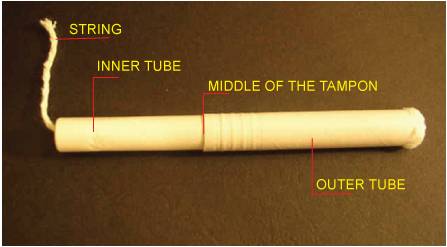
As the name suggests, applicator tampons are tampons that come along with an in- built applicator. The overall structure is divided into 2 tubes. The outer tube is the applicator and the inner tube is the tampon with the removal string visible. The middle of the tampon is the spot where the inner tube glides inside the outer tube.
Types of Tampon applicators:

- Plastic applicators: These are easier to insert and are more comfortable for many women.
- Cardboard applicators: These are not as comfortable to insert, but they are more environment friendly.
2) A non-applicator tampon:
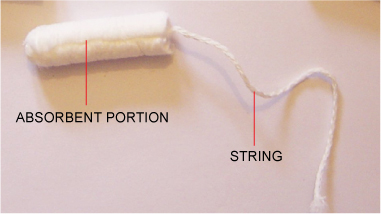
A non-applicator tampon is the one which is deprived of an in-built applicator. It only consists of the two parts the absorbent portion and the string.
Tips on how to insert / use a tampon:
- Inserting a tampon may sound quite tricky to many women. You just need have a relaxed mind to follow the right procedure of inserting it.
- If you are learning to insert the tampon for the first time, it’s good to experiment with the smallest size tampon. Remember, the more you relax, the easier the insertion will be. Any kind of mental stress and nervousness can tense up your muscles making the tampon insertion more difficult.
- Before inserting make sure to wash your hands thoroughly with soap and water. Un-wrap the tampon with your dry hands. Set yourself into the most comfortable position and relax your body.
1) Inserting an applicator tampon:

- An applicator tampon comes along with an in-built applicator (outer tube) attached with an Inner tube (where the removal string is visible).
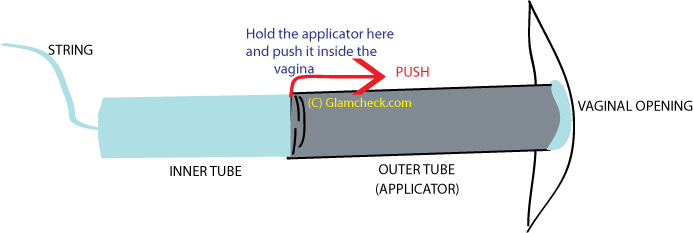
- Now, hold the applicator at the small area right in the middle with your thumb and middle finger.
- Using the other hand, gently place the applicator/ the outer tube in the vaginal opening.
- Push the applicator into the vagina.
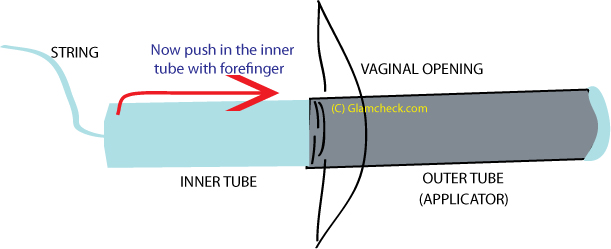
- When your thumb and middle finger are touching the vaginal opening, your applicator is in the right place. This means that the applicator is now placed inside the vagina.
- Relax and take a deep breath. Make sure that your pelvic muscles are relaxed.
- While Still holding your applicator, use your forefinger to gently push in the bottom of the inner tube completely to the bigger tube to push and place the tampon inside the vagina.
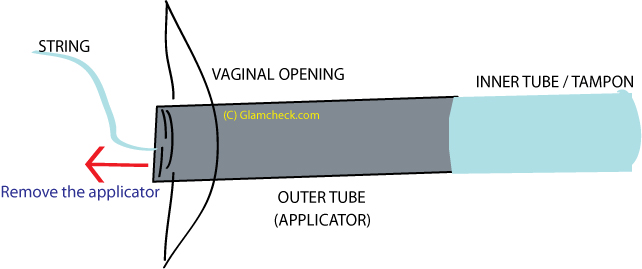
- Remove the applicator or outer tube once the inner tube once placed inside safely. The string of the tampon should be hanging outside the vaginal opening.
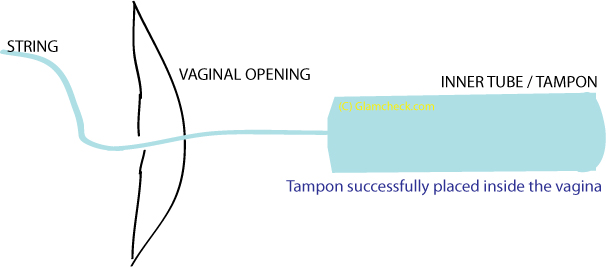
- To remove, you just need to hold the tampon string and gently pull it.
2) Inserting a non- applicator tampon:
- In the case of a non-applicator tampon, the tampon is simply taken out of its wrapping and then carefully inserted into the vagina using a finger (or two).
- Using a non-applicator tampon can be quite messy as the fingers can come in contact with the menstrual blood while inserting it. It also takes a little more time in placing them inside the vagina.
Things to remember:
- Change your tampons frequently, every 4-8 hours.
- Always remove the used tampon before inserting a new one.
- Never wear tampons while going to bed at night. Use pads instead.
